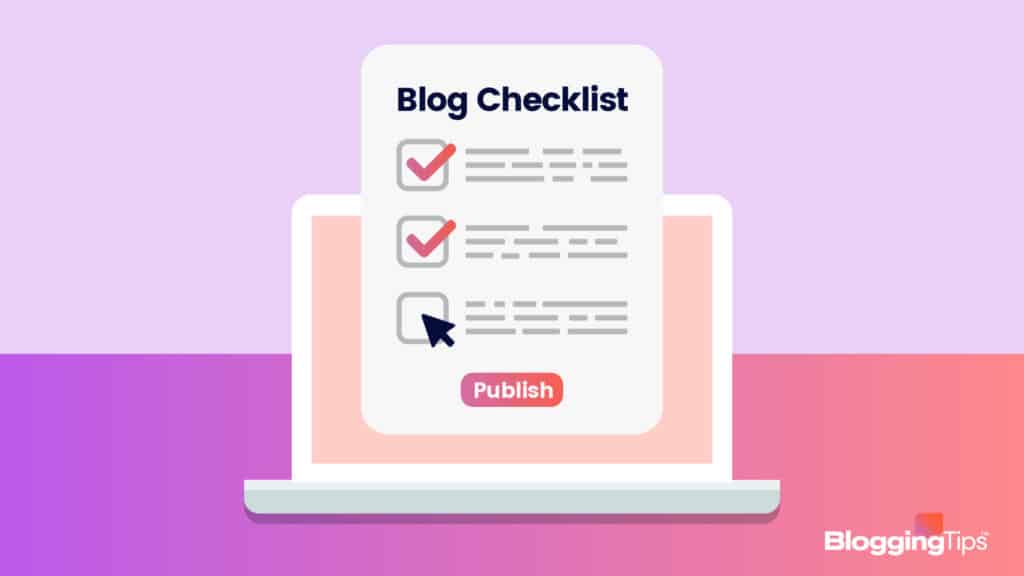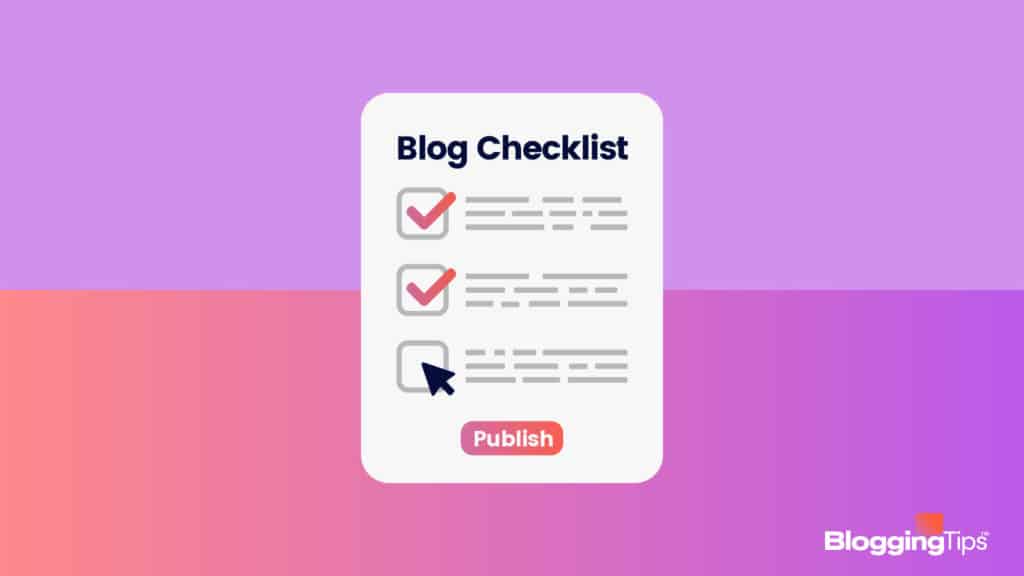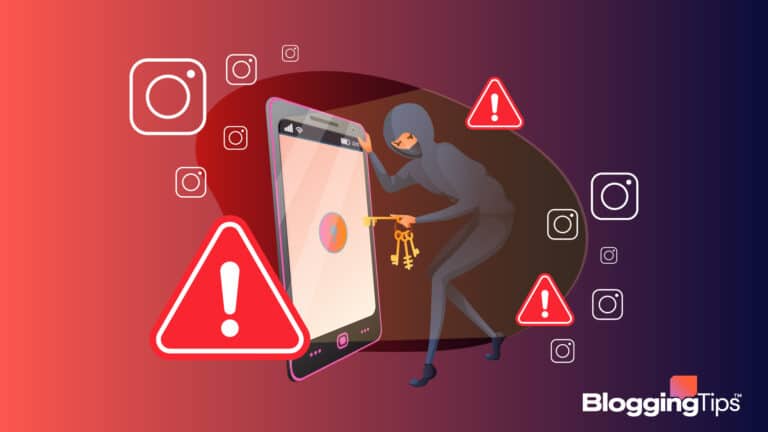Are you about to start a blog?
If so, there are a few things you should keep in mind to ensure your blog setup is successful.
In this post, we’ll provide you with a checklist of items to consider when setting up your blog.
We’ll also share some tips for optimizing your blog for success.
Let’s get started!
What Is A Blog Checklist?
A blogging checklist is simply a list of items to consider when setting up your blog.
By having a checklist, you can ensure that you don’t forget any important details in the process.
Additionally, a checklist can help you keep track of your progress as you set up your WordPress blog.
WordPress checklist helps you remember blog post ideas and write them down on your own blog and make it a profitable blog.
Further, the WordPress dashboard will make your blogging journey joyful by giving you an idea that how many blog posts can you write on your free domain.
Why Is A Successful Blog Setup Important?
A successful blog setup is important because it can help you avoid common mistakes that can lead to a less successful blog.
Additionally, a successful blog setup can help you save time and money in the long run.
By taking the time to set up your blog correctly from the start, you can avoid having to make costly repairs or changes down the road.
Advantages Of Keeping A Checklist For Your Blog
There are several advantages to keeping a checklist for your blog setup.
- First, it can help you save time by ensuring that you don’t forget any important details.
- Additionally, a checklist can help you stay organized and on track during the process.
- Finally, a checklist can help you identify any potential problems early on so that they can be fixed before they become bigger issues.
Now that we’ve gone over the advantages of keeping a checklist, let’s take a look at what items should be included on your blog setup checklist.
Blog Checklist For A Successful Blog Setup:
Below is the detail of the checklist which should be kept in mind while setting up a blog:
1. Choose A Domain Name
The first item on your blog checklist is to choose a domain name.
Your domain name is the address of your blog (e.g., www.example.com).
When choosing a domain name, there are a few things to keep in mind.
- First, try to choose a name that is short, easy to remember, and relevant to the topic of your blog.
- Additionally, try to avoid using hyphens or numbers in your domain name.
- Finally, make sure that the domain name you choose is available.
2. Register Your Domain Name
Once you have chosen a domain name, the next item on your blog checklist is to register your domain name.
Domain registration is simply the process of reserving your domain name so that no one else can use it.
There are a few things to keep in mind when registering your domain name.
- First, make sure to register your domain name with a reputable company.
- Second, be sure to renew your domain name registration on a yearly basis.
- Third, keep your contact information up to date so that you can be reached if there are any problems with your domain name.
3. Set Up Hosting For Your Blog
The next item on your blog checklist is to set up hosting for your blog.
Hosting is simply a service that allows your blog to be accessible on the internet.
When choosing a hosting provider, there are a few things to keep in mind.
- First, make sure to choose a reputable and reliable company.
- Second, be sure to select a hosting plan that meets your needs.
- Third, make sure to set up your hosting account before you install WordPress.
4. Install WordPress
The next item on your blog checklist is to install WordPress.
WordPress is a content management system (CMS) that allows you to easily create and manage your blog.
When installing WordPress, there are a few things to keep in mind.
- First, make sure to install WordPress on a reputable and reliable hosting provider.
- Second, be sure to install the latest version of WordPress.
- Third, make sure to choose a WordPress theme that is compatible with your version of WordPress.
5. Choose A WordPress Theme
The next item on your blog checklist is to choose a WordPress theme.
A WordPress theme is a collection of files that determines the look and feel of your blog.
When choosing a WordPress theme, there are a few things to keep in mind.
- First, make sure to choose a theme that is compatible with your version of WordPress.
- Second, be sure to choose a theme that is responsive, meaning it will adjust to different screen sizes.
- Third, be sure to choose a theme that is easy to customize.
6. Install Plugins
The next item on your blog checklist is to install plugins.
WordPress plugins are small pieces of software that add features and functionality to your blog.
When choosing WordPress plugins, there are a few things to keep in mind.
- First, make sure to choose plugins that are compatible with your version of WordPress.
- Second, be sure to choose plugins that are well-rated and have good reviews.
- Third, be sure to choose plugins that are regularly updated.
7. Configure Your Settings
The next item on your blog checklist is to configure your settings.
WordPress settings control the various options and features of your blog.
When configuring your WordPress settings, there are a few things to keep in mind.
- First, make sure to choose settings that are appropriate for your blog.
- Second, be sure to choose settings that are easy to change.
- Third, make sure to save your changes after you have made them.
8. Write Your First Blog Post
The next item on your blog checklist is to write your first blog post.
A blog post is simply a piece of content that you publish on your blog.
When writing a blog post, there are a few things to keep in mind.
- First, make sure to choose a topic that is interesting and relevant to your niche.
- Second, be sure to use keyword-rich titles and descriptions.
- Third, be sure to format your blog posts so they are easy to read.
9. Promote Your Blog
The final item on your blog checklist is to promote your blog.
There are many ways to promote your blogs, such as social media, email marketing, and search engine optimization (SEO).
When promoting your blog, there are a few things to keep in mind.
- First, make sure to promote your blog regularly.
- Second, be sure to use effective marketing strategies.
- Third, be sure to track your results so you can see what is working and what is not.
10. Measure Your Results
The final item on your blog checklist is to measure your results.
Measuring your results will allow you to see how effective your blog is and what areas need improvement.
When measuring your results, there are a few things to keep in mind.
- First, make sure to track your traffic.
- Second, be sure to track your conversion rate.
- Third, be sure to track your bounce rate.
By following these 10 items on your blog checklist, you will be well on your way to setting up a successful blog.
Additional Things To Keep In Mind For A Successful Blog Setup
You learned about the necessary points above, below are the additional things to keep in mind.

1. Keep your blog’s design clean and simple.
Keeping your blog design clean and simple is a success factor on its own.
A simple design makes your blog look more professional and establishes trust with your readers.
2. Don’t neglect the about page.
Your “About’ page is one of the most important pages on your WordPress blog.
It’s the page where you introduce yourself to your readers and establish a connection with them.
Your contact page should also be given attention.
This is the page where your readers can reach you, so make sure it’s easy to find and use.
Usually, a contact page includes email addresses and cell numbers.
Social media is a powerful tool that can help you promote your blog and reach a wider audience.
You can increase user engagement when you focus on your blog traffic, and you should keep in mind that blog traffic is the source of income for your blog post.
By the way, the motive for starting a blog is making money.
Read: What Is A Blog?
4. Use images and videos to enhance your blog posts.
Images and videos are a great way to add visual interest to your blog posts and make them more engaging.
Your website visitors like images and videos.
Starting a blog with an attractive and relevant image is good.
You might have seen that on social media platforms images are frequently used as a premium theme.
5. Don’t forget to back up your blog.
Backing up your blog is important to do on a regular basis.
There are many WordPress plugins that can help you automate the process.
6. Keep your blog updated with fresh content.
One of the most important things you can do to keep your blog successful is to regularly add new and fresh content.
This will keep your readers coming back for more and also help attract new readers.
7. Be patient and consistent.
It takes time and consistency to build a successful blog.
It’s important to be patient and not get discouraged if you don’t see results right away.
Read: Best WordPress Hosting
Some Important Terms:
For your information, below is the description of important terminologies that you will face while blogging.
So keep reading.
1. Blog Launch Checklist:
A blog launch checklist is a list of everything you need to do before, during, and after launching your blog.
This includes tasks like choosing a domain name, setting up hosting, installing WordPress, and more.
2.WordPress Dashboard:
The WordPress dashboard is the first screen you see when you log in to your WordPress site.
It gives you an overview of your website and lets you manage all of its content and settings.
3. WordPress Theme:
A WordPress theme is a collection of files that control the appearance and layout of your WordPress website.
WordPress themes can be found on many different sites, including the WordPress.org theme directory.
Related post: 60 Beauty Blog Ideas to Keep Your Blog Looking Gorgeous
4. Google Analytics:
Google Analytics is a free service that allows you to track your website’s traffic and performance.
It’s essential for understanding how your website is being used and how it can be improved.
5. Google Search Console:
Google Search Console is a free service that helps you monitor and troubleshoot your website’s appearance in Google search results.
It’s essential for keeping your website visible and accessible to potential readers.
6. Premium WordPress Theme:
A premium WordPress theme is a paid theme that has been designed by a professional WordPress developer.
Premium themes usually come with more features and options than free themes, and they can be customized to match your specific needs.
7. WordPress Plugin:
A WordPress plugin is a piece of software that you can install on your WordPress website to add new features or functionality.
There are thousands of plugins available, and you can find them on the WordPress.org plugin directory.
The blog post “How To Write A Blog Post” will help you more.







